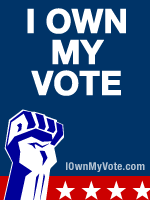Every young person who is now 18 to 20, of voting age and registered to vote, was between 6 and 8 years old in 1995 when Hillary spoke at the UN International Women's Convention! You might do some research to find out how or why an International Women's Convention even came about!
The following comment was left on the NARAL blog in response to their recent endorsement of the other Democratic candidate. It makes the case historically for everyone, to carefully review just where your own decision in voting for the candidate for president is truly, clearly coming from.
In the following, first there are the individual person's own comments framing their intention to comment, and then the history to clearly (re)consider folks!
Read on:
(I have paraphrased this quoted material only slightly for the sake of focus here:)
'How many of you were involved first-person in attempts to pass the ERA, and win equality for all women?
I was, my wife was, my two teen-age sons were, my mother was, my father was, as well as my two grandmothers.
Our efforts are documented in all publications and our histories are the torch run, and convention.
At the time, women had a chance to support other women and themselves by speaking up for passage. Women by sheer numbers and unity could have forced passage of the ERA.
However, mulitudes (such as Phyllis Schafly, the Eagle Forum, as well as others willing to reap the benefits but not fight the fight) yielded to male influence and domination, and were not willing to stand-up and demand an equal voice and protections as afforded to all males at the time, (circa 1972).
They subjugated themselves, allowing their constitutionalized and institutionalized inferiority to men to stand. The ERA would have brought complete equality. Instead bits and pieces of equality have been "granted" through various "Title programs". Full equality does not exist under the law to this day. (*see Mary Francis Berry argument below).
As written in 1972, the Equal Rights Amendment simply stated the following:
Section 1. Equality of rights under the law shall not be denied or abridged by the United States or by any state on account of sex.
Section 2. The Congress shall have the power to enforce, by appropriate legislation, the provisions of the article.
Section 3. This amendment shall take effect two years after the date of ratification.
The fifteen states failing to ratify the ERA were the ten southern states of Alabama, Arkansas, Florida, Georgia, Louisiana, Mississippi, North Carolina, Oklahoma, South Carolina, Virginia, along with the border states of Missouri and Illinois, and the three western states of Arizona, Nevada and Utah.
(Constituting, with a few exceptions, Obama's "stronghold" and base.)
Then as now, many women "sold" other women out in favor of the male bastion. Just as they are doing now regarding Hillary Clinton and we life-time activists for women's and minorities' issues.
When we began working on civil-rights in the 60s, Obama was not born. When we struggled in our attempts to pass the ERA, he was a child. Yet now there are those choosing him as the savior of women's rights.
No public figures have ever worked harder for women and minorities than Hillary Clinton and that record is out there for all to see.
_________________________
* “We Lack a Firm Constitutional Basis for Equal Rights on the Basis of Gender,”
Mary Frances Berry Argues for the ERA:
In the years following the 1920 ratification of the 19th Amendment extending voting rights to women, the National Woman’s Party, the radical wing of the suffrage movement, advocated passage of a constitutional amendment to make discrimination based on gender illegal. The first Congressional hearing on the equal rights amendment (ERA) was held in 1923. Many female reformers opposed the amendment in fear that it would end protective labor and health legislation designed to aid female workers and poverty-stricken mothers. A major divide, often class-based, emerged among women’s groups. While the National Woman’s Party and groups representing business and professional women continued to push for an ERA, passage was unlikely until the 1960s, when the revived women’s movement, especially the National Organization for Women (NOW), made the ERA priority. The 1960s and 1970s saw important legislation enacted to address sex discrimination in employment and education—most prominently, the Equal Pay Act of 1963, Title VII of the Civil Rights Act of 1964, and Title IX of the 1972 Higher Education Act—and on March 22, 1972, Congress passed the ERA. The proposed amendment expired in 1982, however, with support from only 35 states—three short of the required 38 necessary for ratification. Strong grassroots opposition emerged in the southern and western sections of the country, led by anti-feminist activist Phyllis Schafly. Schlafly charged that the amendment would create a “unisex society” while weakening the family, maligning the homemaker, legitimizing homosexuality, and exposing girls to the military draft. In the following 1983 House committee hearing, Mary Frances Berry of the U.S. Commission on Civil Rights argued that the ERA was still necessary due to the lack of clear constitutional guidelines for court decisions and enforcement efforts regarding sex discrimination legislation.
_______________________
"We believe that one reason sex discrimination persists is that we lack a firm constitutional basis for equal rights on the basis of gender."
Now, people who are opposed to ERA say, “Well, you have got the 14th Amendment and that is all you need.” But the Supreme Court of the United States has stopped short of applying the same 14th Amendment standards to sex discrimination that they do to race discrimination. And part of the reason why Justice Powell says, is that there is no ERA, and that is why we don’t have to make sex a suspect class.
What he said is ratification would “resolve the substance of this precise question.” Of course, without it the result is a “catch-22.”
Women are told they don’t need ERA because they have the 14th Amendment, but they can’t have the 14th Amendment’s full protection because they don’t have ERA. So you are caught however you go.
As we have said before in the Commission on Civil Rights, the chief advantage of an ERA as opposed to other kinds of reforms is that it would provide stronger protection. And in the absence of a formal constitutional foundation for gender equality, a hostile legislature we know, could wipe off all the antidiscrimination laws that are now on the books. So what we would do is just put women’s equality into the Constitution.
TESTIMONY OF MARY FRANCES BERRY, COMMISSIONER, U.S. COMMISSION ON CIVIL RIGHTS...
Source: Congress, House, Committee on the Judiciary, Equal Rights Amendment: Hearings before the Subcommittee on Civil and Constitutional Rights of the Committee on the Judiciary, House of Representatives, 98th Cong., 1st session. on H.J. Res. 1, July 13, September 14, October 20, 26, and November 3, 1983, Serial No. 115 (Washington: U.S. Government Printing Office, 1990).'
Saturday, May 17, 2008
1995- Hillary in Beijing
Posted by
la fin du siècle
at
12:58 PM
![]()
Labels: ERA, Hillary Clinton for President, human rights
Subscribe to:
Post Comments (Atom)





























No comments:
Post a Comment